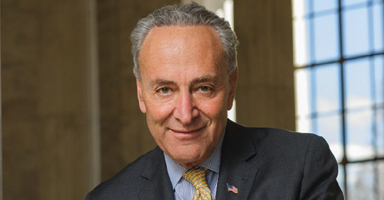
 Five things you need to know about the CBO’s report on Trumpcare
Five things you need to know about the CBO’s report on Trumpcare
Rep. Maxine Waters (D-CA) is less than impress with Trump’s federal budget. The Congressional Budget Office’s analysis of the American Health Care Act of 2017 comes three weeks after the House passed it.
On May 4, the United States House of Representatives passed an updated version of the
American Health Care Act of 2017 (AHCA).
Many Republican members of Congress admitted that they didn’t read it before voting for it, but more importantly, the nonpartisan Congressional Budget Office (CBO) was not given the chance to analyze the legislation before it went to the floor for a vote.
On May 24, the CBL paired with Congress’ Joint Committee on Taxation to release a much-anticipated report on the AHCA. Here are the top five things you need to know from the 41-page analysis:
Under the AHCA, 23 million people will lose their health insurance over the next ten years.
“CBO and JCT estimate that, in 2018, 14 million more people would be uninsured under H.R. 1628 than under current law. The increase in the number of uninsured people relative to the number projected under current law would reach 19 million in 2020 and 23 million in 2026. In 2026, an estimated 51 million people under age 65 would be uninsured, compared with 28 million who would lack insurance that year under current law.”
The AHCA will cut the deficit by $119 billion by 2026—primarily by slashing Medicaid.
The Henry J. Kaiser Family Foundation reports that there are more than 34 million non-elderly people of color in the United States who depend on Medicaid for their health care. If the current version of the AHCA is passed in the Senate and signed by President Donald Trump, it will cut $834 billion from Medicaid over the next 10 years.
Many insurance plans under the AHCA will provide less coverage.
Starting in 2020, states will be allowed to waive the Affordable Care Act provision that requires all insurance plans sold on the market to cover 10 essential health benefits (EHB). Per Healthcare.gov, the currently covered EHBs are:
- Ambulatory patient services (outpatient care you get without being admitted to a hospital)
- Emergency services
- Hospitalization (like surgery and overnight stays)
- Pregnancy, maternity and newborn care (both before and after birth)
- Mental health and substance use disorder services, including behavioral health treatment (this includes counseling and psychotherapy)
- Prescription drugs
- Rehabilitative and habilitative services and devices (services and devices to help people with injuries, disabilities, or chronic conditions gain or recover mental and physical skills)
- Laboratory services
- Preventive and wellness services and chronic disease management
- Pediatric services, including oral and vision care (but adult dental and vision coverage aren’t essential health benefits)
Older people will pay more for coverage; people with higher incomes will pay less.
“H.R. 1628 would result in significant changes in premiums according to people’s age—on net, after accounting for tax credits—that are similar to those illustrated in the March 13th cost estimate. Under the act, premiums for older people could be five times larger than those for younger people in many states, but the size of the tax credits for older people would be only twice the size of the credits for younger people. As a result: For older people with lower income, net premiums would be much larger than under current law, on average. For younger people with lower income, net premiums would be about the same or smaller, depending on the state’s approach to regulation. For people with higher income, net premiums would be reduced among people of most ages, on average.”
Premiums will be slightly lower—but insurance plans will cover less and require larger out of pocket contributions.
“Although premiums would decline, on average, in states that chose to narrow the scope of EHBs, some people enrolled in nongroup insurance would experience substantial increases in what they would spend on health care. People living in states modifying the EHBs who used services or benefits no longer included in the EHBs would experience substantial increases in out-of-pocket spending on health care or would choose to forgo the services.”
The report says that increase could be thousands of dollars a year, particularly for people who require expensive prescription drugs and will no longer be shielded from annual and lifetime coverage limits.
Download the full report here.
From Colorlines: News for Action.





Be the first to comment